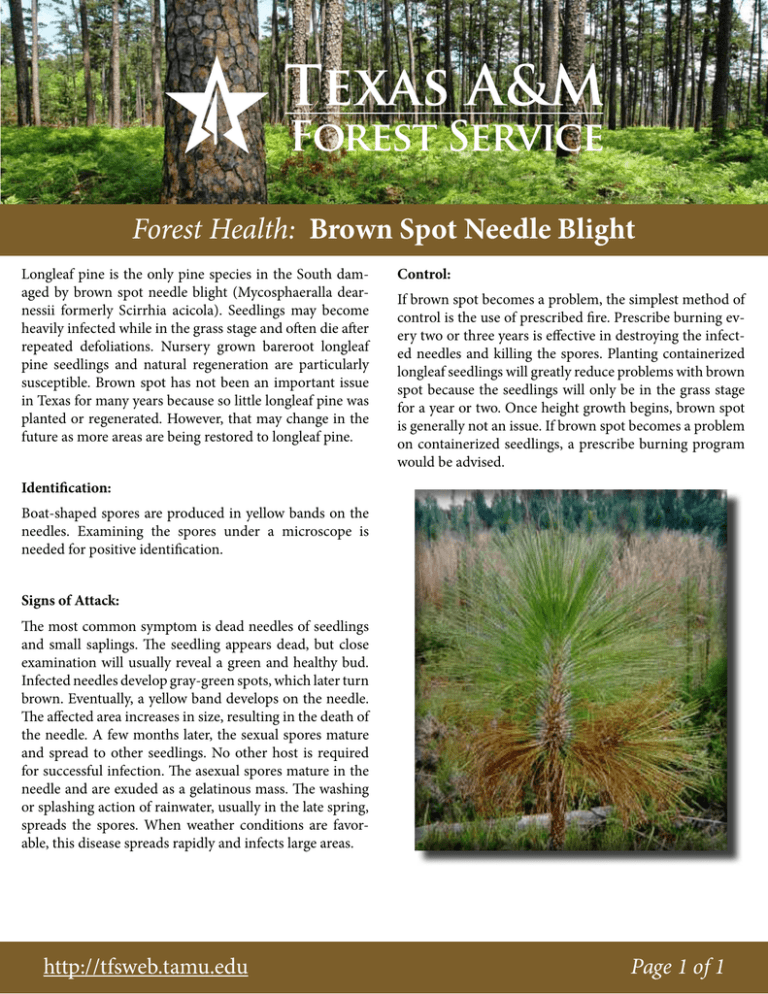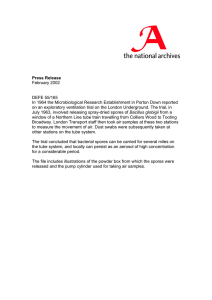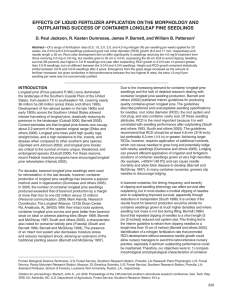Forest Health:
advertisement

Forest Health: Brown Spot Needle Blight Longleaf pine is the only pine species in the South damaged by brown spot needle blight (Mycosphaeralla dearnessii formerly Scirrhia acicola). Seedlings may become heavily infected while in the grass stage and often die after repeated defoliations. Nursery grown bareroot longleaf pine seedlings and natural regeneration are particularly susceptible. Brown spot has not been an important issue in Texas for many years because so little longleaf pine was planted or regenerated. However, that may change in the future as more areas are being restored to longleaf pine. Control: If brown spot becomes a problem, the simplest method of control is the use of prescribed fire. Prescribe burning every two or three years is effective in destroying the infected needles and killing the spores. Planting containerized longleaf seedlings will greatly reduce problems with brown spot because the seedlings will only be in the grass stage for a year or two. Once height growth begins, brown spot is generally not an issue. If brown spot becomes a problem on containerized seedlings, a prescribe burning program would be advised. Identification: Boat-shaped spores are produced in yellow bands on the needles. Examining the spores under a microscope is needed for positive identification. Signs of Attack: The most common symptom is dead needles of seedlings and small saplings. The seedling appears dead, but close examination will usually reveal a green and healthy bud. Infected needles develop gray-green spots, which later turn brown. Eventually, a yellow band develops on the needle. The affected area increases in size, resulting in the death of the needle. A few months later, the sexual spores mature and spread to other seedlings. No other host is required for successful infection. The asexual spores mature in the needle and are exuded as a gelatinous mass. The washing or splashing action of rainwater, usually in the late spring, spreads the spores. When weather conditions are favorable, this disease spreads rapidly and infects large areas. http://tfsweb.tamu.edu Page 1 of 1






